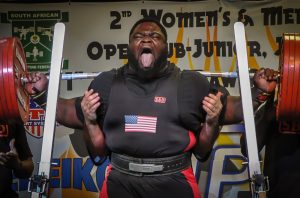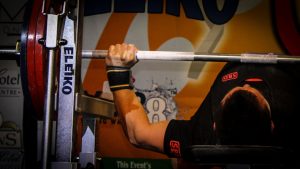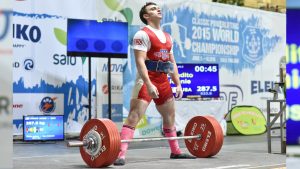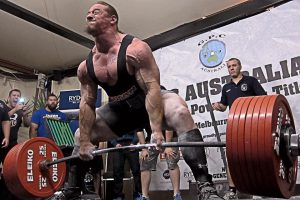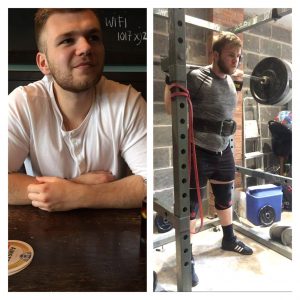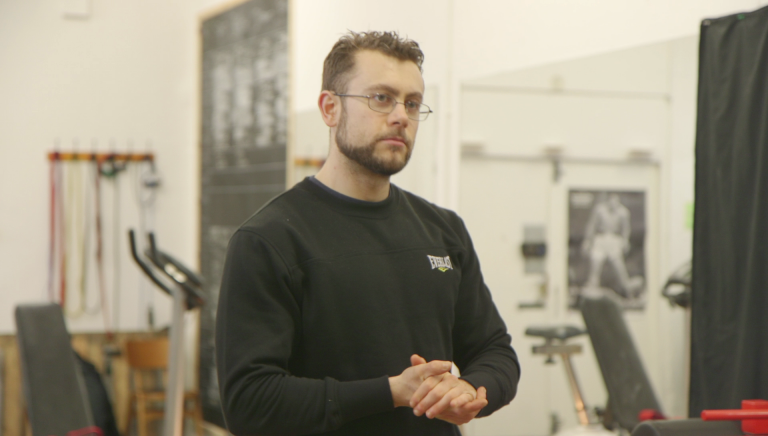Common Powerlifting Programming Mistakes
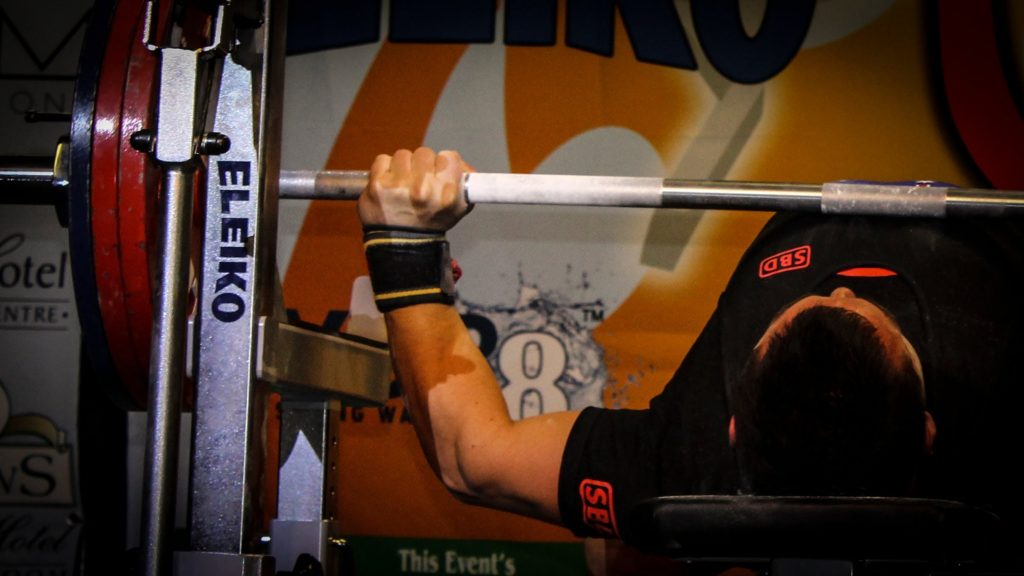
Programming.
Efficient program design is crucial in making sure that powerlifting athletes not only optimise their performance on the day of competition, but also to ensure that they make consistent progress over time, minimising plateaus and continuously adding weight to the barbell. There are a number of programming errors that I frequently see in powerlifting program design, therefore this article aims to shine a light on a number of different areas where powerlifting athletes go wrong in their training, and how to begin training in a more optimal fashion to maximise long term strength gains.
Neglecting Hypertrophy
Gaining strength can be achieved through neurological adaptations, such as developing better inter-muscular co-ordination and more efficient motor unit recruitment/firing rate. Put simply, practicing the lifts more frequently will bring about plenty of strength gains. However, after a certain amount of time, these neurological adaptations to strength training subside, and one must make muscular hypertrophy a goal of their training in order to continually forge more gains in strength.
Muscular Hypertrophy is defined as an increase in muscular size, most commonly measured by analysing the cross sectional area of a muscle. Increasing the cross sectional area of a muscle is thought to enhance a muscles force-generating capacity, and plenty of studies have successfully identified a very strong relationship between a muscle size, and its ability to exert force. The increase in size of a muscle has also been associated with having a small effect on a muscles moment arm, which could further enhance strength, particularly in larger muscle groups. As we can see, muscular hypertrophy is an incredibly important factor to consider when designing a training program.
How do we train for hypertrophy? Studies have shown muscular hypertrophy has been shown to be achieved through high training volumes.
Training volume is defined as the total workload performed over a given amount of time. Volume = weight x reps x sets.
In order to elicit hypertrophy, an athlete must consistently increase the total amount of workload they perform over time. As the body adapts to stimulus incredibly well, an athlete must continuously increase this stimulus to keep making progress. In short, if you aren’t pushing the boundaries with the amount of training volume you perform, continued hypertrophy will not occur, meaning you will not continue to provide the body with more potential to build strength.
Traditional rep range parameters for hypertrophy have been prescribed between 6-12, the theory being that one can take advantage of a higher time under tension and thus an increased metabolic fatigue, eliciting a superior hypertrophic response. However recent studies have shown that when volume is accounted for (total training volume is exactly the same between two groups) hypertrophy is very similar. So when training for hypertrophy, rep ranges are less important than ensuring the athlete performs high volumes of overall workload (weight x reps x sets). Personally, during my hypertrophy phases of training, I prefer to use higher rep ranges, 6-10 mostly. I feel that this allows you to perform a higher workload in a shorter amount of time, and the lower intensity (% or 1rm) used in higher rep ranges prevents too much fatigue from being accumulated during this phase of training.
There is plenty of evidence to suggest that more muscle mass brings about better powerlifting performance. Literature has shown that a larger cross sectional area of muscle in individuals is a very effective indicator of powerlifting performance, and more successful powerlifters typically have higher degrees of muscle mass. Despite this, I frequently see powerlifting programs that do not directly aim to increase muscle size. In recent years, we have seen a rise in popularity of Bulgarian-style programming, which typically promotes very high frequency with relatively low overall volume. Although high frequency is a brilliant thing for powerlifters (as I’ll discuss later in the article), and these programs are no doubt beneficial for certain periods of time in a powerlifters overall plan, I feel that athletes are selling themselves short if they solely devote all of their training to this approach. Training blocks predominantly devoted to high volume/hypertrophy are a great way to elicit a lot of muscle growth in the early phases of an athletes training program. This new muscle can then be trained to produce high amounts of force later in an athletes program as they approach competition or a test day, where overall volume lowers and intensity (%1rm) increases.
Not Enough Exercise Variation
Powerlifting is an incredibly specific sport, with only three competitive movements. Thus, as will all athletic program design, specificity must be a primary focus for the athlete. This means a lot of training volume dedicated to the squat, bench press and deadlift. However, a program can actually be overly-specific, placing so much focus on the competitive movements that athletes neglect other training that can greatly enhance their strength potential. With overly specific programming, we see the athlete place too much focus on specific strength as oppose to general strength. This is also a predominant feature of Bulgarian style programming. Again, this isn’t to say that Bulgarian programming is innately bad, however if it is not blended with other training methods over the course of an athletes annual plan, athletes may be selling themselves short on taking advantage of the benefits of training variation.
Variation is defined as ‘The manipulation of training variables to prevent staleness and injury and to magnify the long term adaptive response to training’.
In powerlifting terms, exercise variation will predominantly come in the form of developing general strength. Developing general strength should always be performed with the predominant goal of improving the sport specific movements, in this case the squat, bench and deadlift. This prevents the athlete from violating specificity, and ensures that the training program has a clear focus of enchancing the competition lifts. This is where assistance training becomes an important part of a powerlifters program. Assistance work is often characterised as exercises directed at improving movement strength. For example, if you frequently miss your squat right at the bottom of the lift, implementing pause squats may help you to build a lot of static and supportive strength in the hole by eliminating the stretch reflex and helping to maintain tightness. Similarly, if you often miss bench presses right off the chest, long pause training can help to develop strength in this position in exactly the same way. This is where individual differences come into play. There are plenty of brilliant assistance movements out there- it is up to the athlete/their coach to decide where their weak points lie and to implement relevant assistance exercises accordingly.
In addition to performing movements to target weak areas of the competition lifts themselves, exercises can also be added to athletes training programs to target specific muscle groups that are weak or underactive. We can describe these as supplementary exercises. As they are not as competition specific as assistance exercises, they are best performed during earlier phases of an athletes training program to promote muscular balance and postural integrity. For example, an athlete may have weak triceps in their bench press, in which case tricep-specific work such as close grip bench pressing/skull crushers can be added to address this issue. Similarly, an athlete may have weak glutes, which may be affecting their hip extension strength in the squat and deadlift. Exercises like weighted glute bridges/cable pull throughs would be a brilliant option here.
Consistently performing competition specific exercises without applying exercise variation in the form of assistance/supplementary exercises can massively hinder an athletes long-term strength potential. Not only will weaknesses remain weaknesses, but the athlete will likely hit plateaus due to the adaptive resistance associated with performing the same exercises over and over again. We will hinder our ability to build new functional muscle mass and strengthen connective tissues that may be hindering our competitive lifts, and will hit technical plateau’s caused by failure to address movement weaknesses.
It can also increase our likelihood of injury. The competition lifts emphasise the development of a lot of larger musculature, however in many cases neglect smaller muscle groups that can play an important role in posture and muscular balance. For example, muscle groups like lower trapezius and serratus anterior play a key role in promoting shoulder girdle health. Due to the fact that the humerus moves independently of the scapula during a bench press, these muscles receive no activation. Consistent bench pressing without addressing these crucial muscles could result in shoulder injuries. A powerlifting program must give some focus to musculature that is needed to maintain overall muscular balance, as this will allow them to perform the main lifts at higher training volumes without injury occurring.
Neglecting specificity altogether
As mentioned above, specificity is crucial for every athlete, especially powerlifters, given the incredibly specific nature of the sport. Specificity needs to be the main focus of an athletes training program, particularly as competition draws closer. Just as an athlete can rely too heavily on specificity and neglect weaknesses, many powerlifting programs often neglect specificity to the point where it becomes detrimental to performance. We often see this in programs such as Westside barbell templates, which often involve rotating exercises on a weekly basis, with very limited training volume being accumulated on the competition lifts themselves. This leaves the lifter never actually developing technical prowess on their competition specific skills, and often spending a lot of time performing exercises that arguably don’t even have high transfer to the main lifts. Thus, there is a fine balance between providing enough specificity to ensure the athlete makes the most specific training adaptations possible, however enough variation so the athlete does not stagnate from movement inefficiencies and muscular imbalance.
In powerlifting terms, performing a one rep set, to competition specific technique requirements whilst wearing competition specific equipment would allow an athlete to optimise specificity. Although this should be more emphasised as competition draws closer, it is also a good idea to keep this sort of training in a powerlifters training program year round. This allows the athlete to consistently work on developing technical prowess under heavy load (85% + of their 1RM) whilst taking advantage of the neurological adaptations to heavy strength training. This is a valuable skill for powerlifters, therefore completely neglecting this strength altogether may result in a de-training effect. Many training programs utilise this method of training even during hypertrophy/volume phases of training with great success. For example: an athlete will often work up to a heavy, submaximal single (in the 85-95% range) before dropping down in weight to perform their remaining working sets of volume.
Not enough frequency
Several studies have examined the effect of training frequency on muscular size and strength gains. When volume is controlled for, higher frequency programs appear to elicit more strength and hypertrophic adaptations. It is theorised that this is because protein synthesis is peaked more frequently – which causes more muscle growth. As we’ve already discussed, a larger muscle has the potential to exert more force. In addition, training with a higher frequency allows an athlete to get more practice at performing competition specific movements, which will improve neuromuscular adaptations and promote more strength gains. A study on Norwegian powerlifters revealed this exact result. It found that athletes who divided their training program over six sessions made more muscle size and strength gains than those who only divided their training over three.
Put simply, dividing training volume over more frequent training sessions is very beneficial for a powerlifter, as long as volume is kept in check. The key point here is that volume must spread over the course of more sessions, as oppose to just increased. Dramatically increasing your volume and frequency simultaneously is likely to quickly hinder your recovery capacity.
I hope you’ve enjoyed this article on just a few different common mistakes that are often found in powerlifting programs. It is also very important to mention two of the most important factors that will dictate an athlete’s long-term strength progress – sleep and food! If these two things are not kept in check, the most optimal program in the world will not elicit optimal results.
About Matthew Brown
I’m a Strength & Conditioning/personal development blogger currently studying Strength & Conditioning at Uclan University. I have a huge passion for strength training, personal growth and philosophy. My content aims to inspire you to develop mentally and physically, under the barbell and beyond.
Contact –
http://www.lifeandlifting.com/
https://www.facebook.com/Life-Lifting-517963418368213/?__mref=message_bubble
References –
Brechue, W.F. and Abe, T., 2002. The role of FFM accumulation and skeletal muscle architecture in powerlifting performance. European Journal of Applied Physiology, 86(4), pp.327-336.
Bryanton, M.A., Kennedy, M.D., Carey, J.P. and Chiu, L.Z., 2012. Effect of squat depth and barbell load on relative muscular effort in squatting. The Journal of Strength & Conditioning Research, 26(10), pp.2820-2828.
Erskine, R.M., Fletcher, G. and Folland, J.P., 2014. The contribution of muscle hypertrophy to strength changes following resistance training. European journal of applied physiology, 114(6), pp.1239-1249.
Lovera, M. and Keogh, J., 2015. Anthropometric profile of powerlifters: differences as a function of bodyweight class and competitive success. The Journal of sports medicine and physical fitness, 55(5), pp.478-487.
MacDougall, J.D., Gibala, M.J., Tarnopolsky, M.A., MacDonald, J.R., Interisano, S.A. and Yarasheski, K.E., 1995. The time course for elevated muscle protein synthesis following heavy resistance exercise. Canadian journal of applied physiology, 20(4), pp.480-486.
Raastad T, Kirketeig, A, Wolf, D, Paulsen G. Powerlifters improved strength and muscular adaptations to a greater extent when equal total training volume was divided into 6 compared to 3 training sessions per week (abstract). Book of abstracts, 17th annual conference of the ECSS, Brugge 4-7 July, 2012.
Schoenfeld, B.J., 2013. Potential mechanisms for a role of metabolic stress in hypertrophic adaptations to resistance training. Sports medicine, 43(3), pp.179-194.
Schoenfeld, B.J., Ogborn, D. and Krieger, J.W., 2016. Dose-response relationship between weekly resistance training volume and increases in muscle mass: A systematic review and meta-analysis. Journal of Sports Sciences, pp.1-10.
Schoenfeld, B.J., Ratamess, N.A., Peterson, M.D., Contreras, B., Sonmez, G.T. and Alvar, B.A., 2014. Effects of different volume-equated resistance training loading strategies on muscular adaptations in well-trained men. The Journal of Strength & Conditioning Research, 28(10), pp.2909-2918.
Sugisaki, N., Wakahara, T., Murata, K., Miyamoto, N., Kawakami, Y., Kanehisa, H. and Fukunaga, T., 2015. Influence of muscle hypertrophy on the moment arm of the triceps brachii muscle. Journal of applied biomechanics, 31(2).
Wesley Smith, C. Israetel, M. Hoffmann, J. Scientific Principles of Strength Training.

